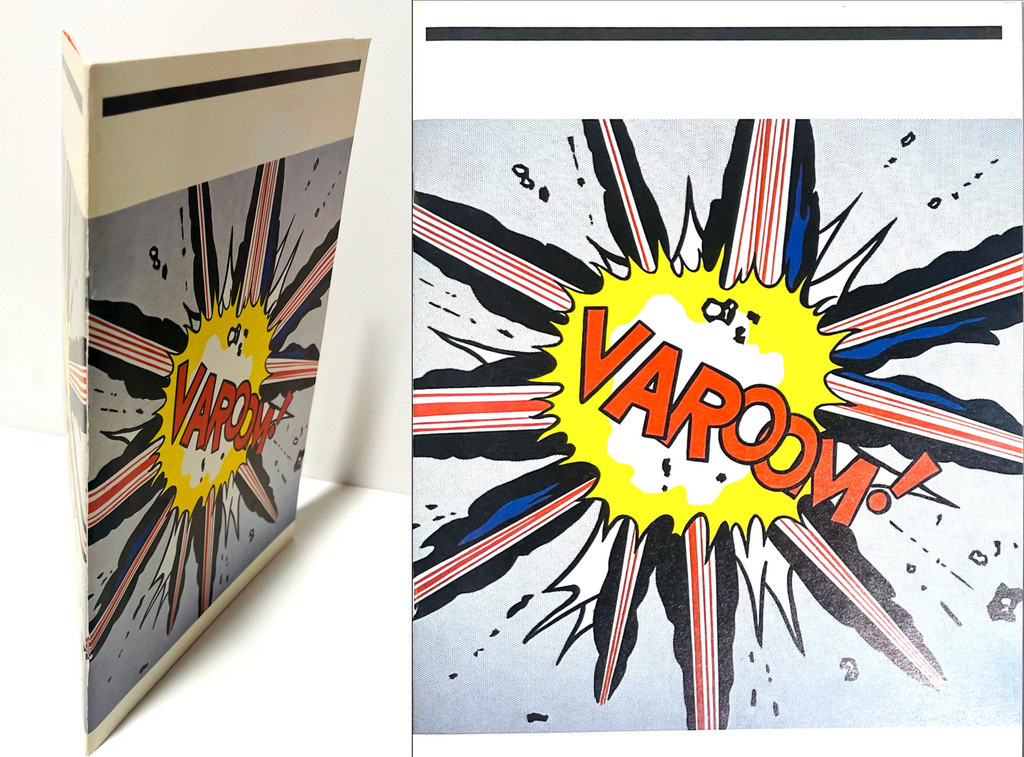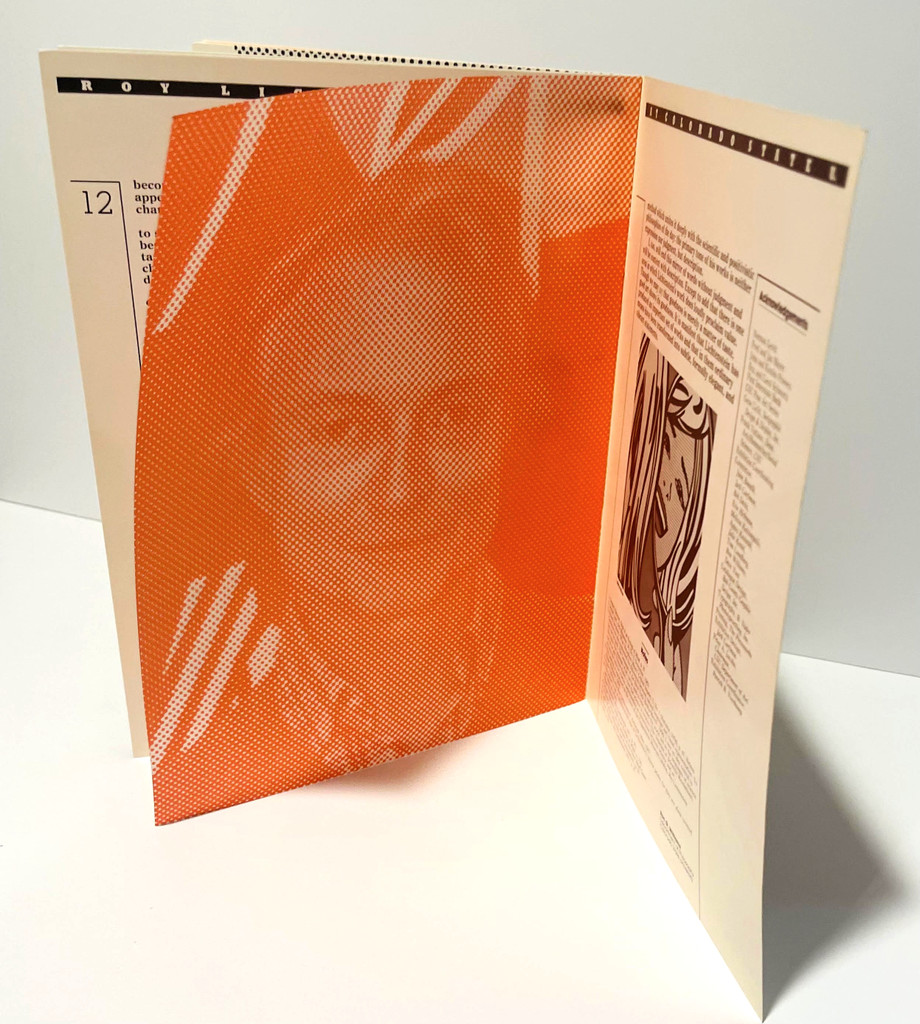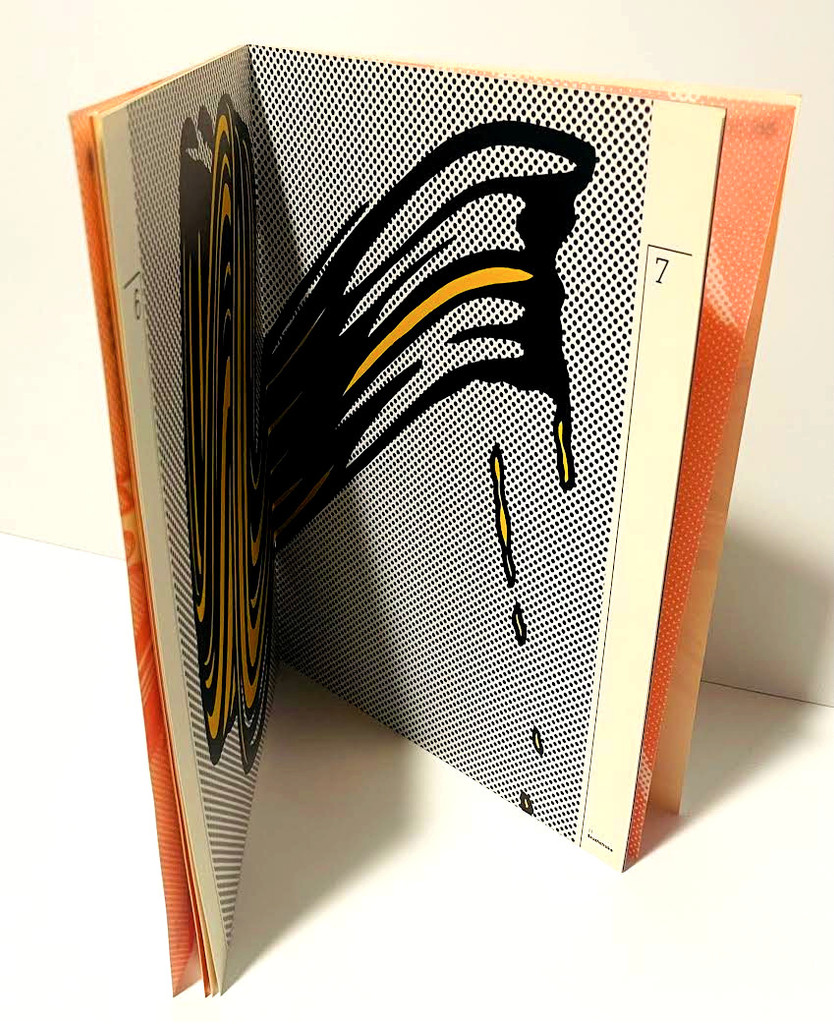
An Educated Collector is Our Best Client
In business for nearly two decades, we are a well established, popular contemporary art boutique specializing in expertly chosen, blue chip prints, multiples, uniques, books, ephemera and merchandise at different price points, with a focus on the secondary market. Please click on the "Contact Us" button at the bottom of this page for questions about any work, pricing and/or to arrange to visit our showroom/gallery - located in between Manhattan's Flatiron and Chelsea Flower Districts.
Roy Lichtenstein, Roy Lichtenstein at CSU, rarely seen exhibition catalogue, 1982
CONTACT GALLERY FOR PRICE
Description
Roy Lichtenstein
Roy Lichtenstein at CSU, rarely seen exhibition catalogue, 1982
Softback exhibition catalogue with 2 very cool vellum pages with the Benday dots
Not signed
11 × 8 1/2 inches
unframed
This catalogue is unsigned and has no stated edition number, but it is extremely rare. Nobody else seems to have it. It comes with color and bw illustrations and 2 vellum pages with the Benday dots.
Published for the Roy Lichtenstein exhibition at Colorado State University from April 1 to 30, 1982.
About Roy Lichtenstein:
Pop Art looks out into the world. It doesn’t look like a painting of something, it looks like the thing itself.
—Roy Lichtenstein
Roy Fox Lichtenstein’s (1923–1997) high-impact, iconic paintings have become synonymous with Pop art—a movement he helped originate—and his merging of mechanical reproduction and hand drawing has become central to the critical understanding of the movement.
Born in New York, Lichtenstein developed an interest in drawing, science, and jazz music at a young age. He attended Ohio State University (1940–42), before being drafted into the Army (1943–45). Supported by the G.I. Bill following the war, Lichtenstein resumed his art studies at the School of Fine and Applied Arts at Ohio State and graduated with an MFA in 1949. He stayed in Ohio for the next eight years, working first as a teacher and later as an industrial draftsman and furniture designer, among other part-time roles. Lichtenstein then accepted an assistant professorship in industrial design at the State University of New York, Oswego, which led to a teaching position at Douglass College at Rutgers University, New Jersey.
In 1961 Lichtenstein painted one of his first Pop paintings, Look Mickey. This work, in its use of cartoon characters and deliberate imitation of the Ben-Day dot commercial printing process, marked a major turning point in his career. Lichtenstein had his first solo show with Leo Castelli in early 1962—which sold out before the opening—and another in 1963. After this commercial success with Castelli, he resigned from Rutgers in 1964 and moved to back New York to concentrate exclusively on his art. Into the next decade, he depicted stylized landscapes, consumer-product packaging, adaptations of paintings by famous artists, geometric elements from Art Deco design, parodies of Abstract Expressionism, and war scenes and explosions. Despite their immense variation in subject matter, all of these works underlined the contradictions of representing three dimensions on a flat surface.
The late 1960s saw Lichtenstein’s first museum surveys: in 1967 the Pasadena Art Museum initiated a traveling retrospective, in 1968 the Stedelijk Museum, Amsterdam, presented his first European retrospective, and in 1969 he had his first New York retrospective, at the Solomon R. Guggenheim Museum. He began living in Southampton, New York, in 1968, and in 1984 he acquired a studio loft in Manhattan; thereafter he would split his time between Southampton and Manhattan.
In the early 1970s Lichtenstein explored formal questions further with his abstract Mirrors (1969–79) and Entablatures (1970–76) series. From 1974 into the 1980s he probed another long-standing interest: the concept of artistic style. He produced paintings that reinterpreted the forms and techniques of classical architecture, Cubism, Futurism, Surrealism, and more. Lichtenstein continued to question the role of style, this time in consumer culture, in his 1990s series Interiors (1990–97), which included images of his own works as decorative elements in domestic settings. In his attempt to fully grasp and expose how the forms, materials, and methods of production had shaped the images of Western visual culture, Lichtenstein also explored other mediums such as polychromatic ceramic, aluminum, brass, and serigraphy. He experimented with printmaking as early as the late 1940s and completed several large-scale public sculptures, as well as a number of major murals.
Lichtenstein continued to refine his technique and expand his subject matter in his later work, turning to such unexpected themes as the painterly gesture, the female nude, and Chinese landscape painting. In 1995 he was awarded the National Medal of Arts in recognition of his contributions to American art.
Courtesy of Gagosian Gallery





















